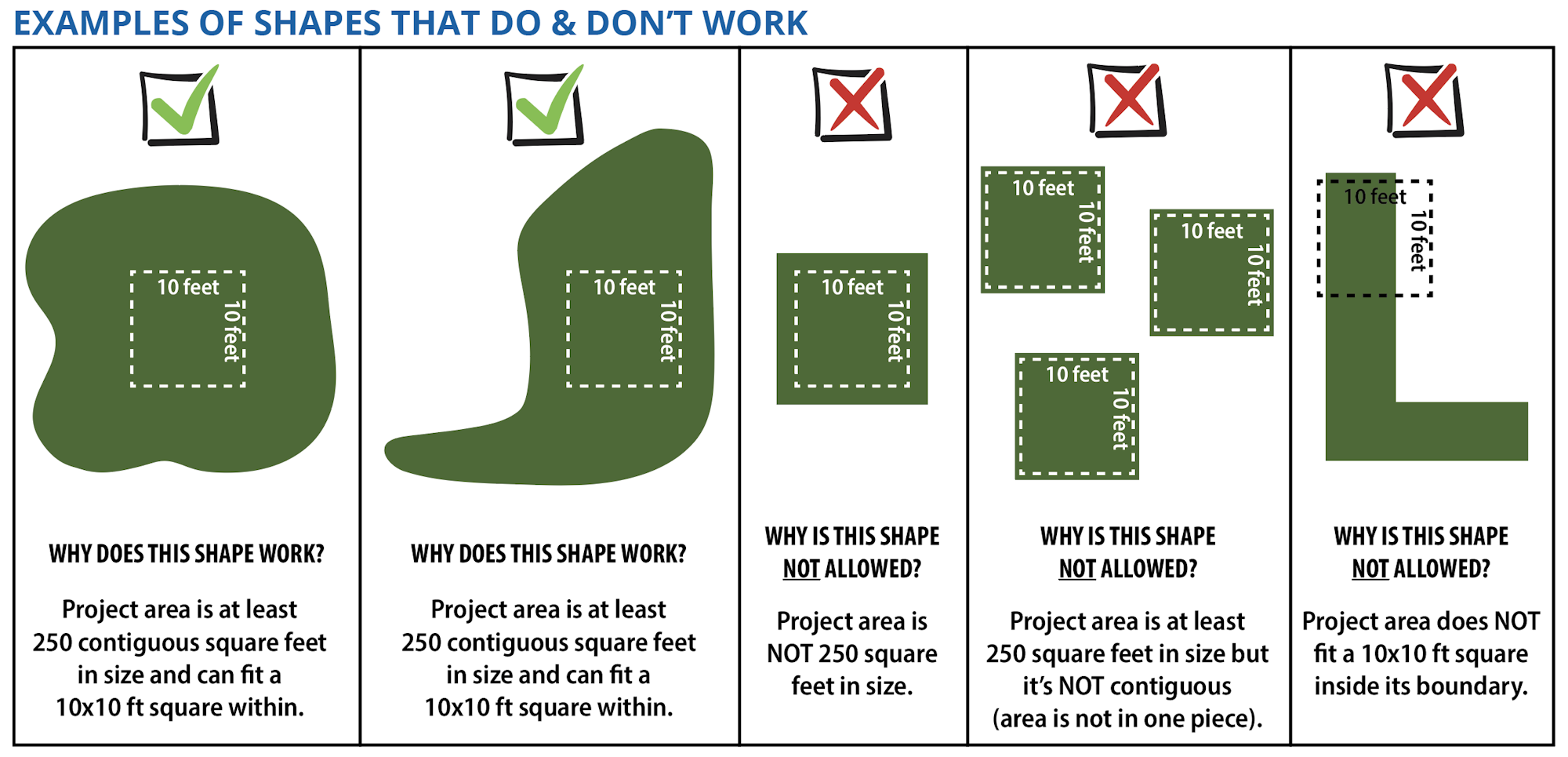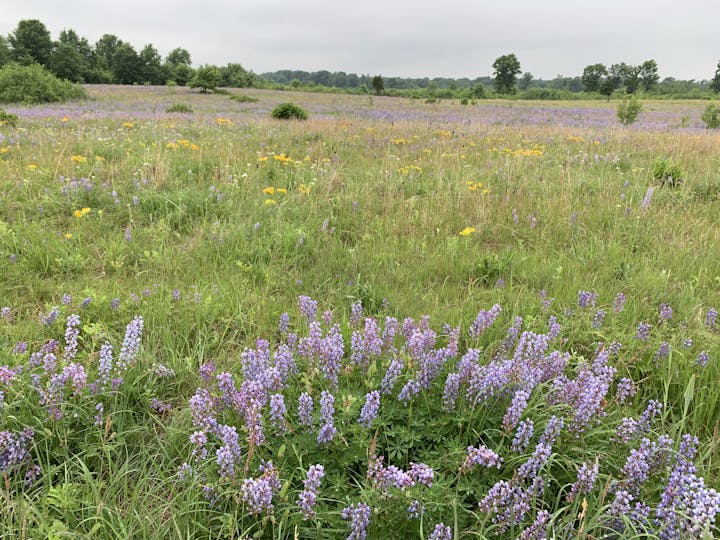Habitat Restoration Project
The goal of a habitat restoration is to create a patch of prairie, oak savanna, forest, or other native habitat filled only with native plants. The qualify as a habitat restoration, the project area must meet minimum size requirements and must be a lawn (turfgrass), impervious surface (such as a driveway), highly eroded natural area, or be in another condition which warrants restoration.
Who May Apply?
Residents, non-profits, businesses, schools, and local goverment units (LGUs) may apply. The project area must be located on property owned by the applicant.
Maximum Grant Award
- Residential applicant: Up to 75% of cost up to $5,000
- Non-residential applicant: Up to 50% of cost up to $50,000
Approved Uses of Funds
The purchase of materials or services needed for habitat restoration are allowable costs. This includes design fee, site preparation, erosion control, seeding, and planting. Landscaping edging may be eligible if it supports project maintenance needs, but eligible cost for edging will not exceed a set limit per linear foot. Projects installed by residents and non-profits may also be offered additional funds to support the first three years of maintenance if it’s done by a professional; talk to the grant coordinator if this applies to you.
Aesthetic elements such as stepping stones and bird baths are not eligible. If the project you have in mind is a highly designed space with non-natural design elements or vegetables, it is likely not a habitat restoration. A Native Plant Project may be a better fit for you.
Eligibility for In-Kind Credit or Professional Maintenance Funds
This project type may be eligible for in-kind labors and/or three (3) years of professional maintenance support for residents and non-profits only. In-kind credit must be accounted for during the application process. The grant coordinator will determine if a project is eligible for professional maintenance support.
Some projects may not be awarded a Stewardship Grant unless they commit to three years of professional maintenance. If a grantee enters into a grant agreement that include professional maintenance funds, they must commit to at least three years of maintenance performed by a qualified habitat restoration specialist.
Maximum Allowable Costs
To maximize value per dollar but still allow flexibility for grantees in materials selection, maximum allowable cost has been set.
Download the 2025 Maximum Allowable Costs informationNative Plant Requirements
To be eligible for a Habitat Restoration Grant, a project must use non-cultivated varietes of native plants and provide habitat benefits. Requirements include:
- Only native plants in their natural form. No cultivars are allowed.
- Native plants must be purchased from an approved vendor.
- Plant selection must be appropriate for site conditions.
- Plant selection must include at least 9 different species with 3 species that bloom in spring, 3 species that bloom in summer, and 3 species that bloom in fall. (Note: All plants types qualify as a "blooming plant" including wildflowers, grasses, sedges, shrubs, and trees, etc.)
- Must practice ecologically friendly maintenance.
To apply, you will need to provide a detailed native plant list that includes scientific name, common name, bloom time, size of plant to be purchased, price for each, quantity of each, and total cost. See an example native plant list. Download a native plant list spreadsheet that you can populate with your plant selections (open in Excel, Google Sheets, or other spreadsheet application). See application form for additional requirements.
Only native plants are allowed in your habitat restoration project area. Hostas and other ornamentals must be removed. The grant coordinator may allow an already existing healthy, non-invasive tree to remain.
Minimum Size Requirements
The goal of a habitat restoration is to provide a diversity of native plants that provide water quality protection benefits as well as habitat. The project area may be any shape you want, however the project area must be a minimum of 250 continguous square feet (contiguous meaning in one defined area and not spread out in multiple areas). The project shape must also accommodate a 10-foot by 10-foot square within. The 10x10-ft requirement helps us set a minimum project length and width but allows for flexibility of project shape.
The graphic below shows example of shapes that will and will not qualify as a habitat restoration.
View all project requirements
Download the Habitat Restoration Project Requirements handout
Maximize Your Cost-Share Award
Review the scoring sheet to see how you can maximize the cost share award for this project type:
Scoring Sheet for Habitat Restoration Project



